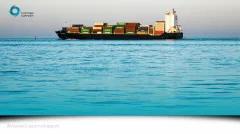When goods are bought or sold Cost and Freight (CFR) it means that the Seller is responsible for the delivery of the goods to a ship and loading the goods onto the ship. The seller is also responsible for any customs export documentation and export licences if needed. Also, the seller is responsible in case of any inspections. The seller is NOT responsible for arranging insurance for the shipment.
Risks and Costs for the Seller
The seller is responsible for arranging and paying for transportation to the port of destination. The seller is also responsible for all export formalities. While the seller pays for transportation to the port of destination, the risk for the cargo transfers to the buyer the moment the shipment is loaded on the vessel. The seller is responsible for all costs related to exporting the shipment from the country of origin.
Risks and Costs for the Buyer
The risk for the shipment passes to the buyer when the shipment is loaded onto the vessel. The buyer is responsible for unloading the goods off the ship at the port of destination. Costs for offloading and onward transportation at the port of destination are for the buyer. The Buyer is responsible for all costs related to importing the shipment into the country of destination. Since the Seller is not responsible for insuring the shipment, the seller needs to arrange insurance for the shipment.
Potential Issues for the Seller
Because risk is transferred to the buyer once the shipment is loaded, the risk is relatively low. Until the shipment is loaded, the seller is responsible for any loss or damage.
Potential Issues for the Buyer
Seller only arranges for offloading and transportation to the end destination. The largest part of the costs are controlled by the buyer, so there is a risk of overcharging. Seller may also select options for transportation that are more costly than the buyer would have. As the shipment is not insured by the seller and the risk transfers to the buyer once the shipment is loaded, the seller should arrange insurance.
Use of Cost and Freight
CFR can be used for transportation over water, both overseas and inland. In the case of containerized goods, it is better to use Carriage and Insurance Paid (CIP)
CFR Under Incoterms 2020
The new Incoterms 2020, which were launched earlier this year by the ICC are now in effect. The Incoterms 2010, which you can find in our earlier post here, will still be valid. As long as both parties agree to the terms, they are. There are no changes to Cost and Freight under the Incoterms 2020.
If you have any questions on Cost and Freight or any of the other Incoterms, contact one of our experts.














